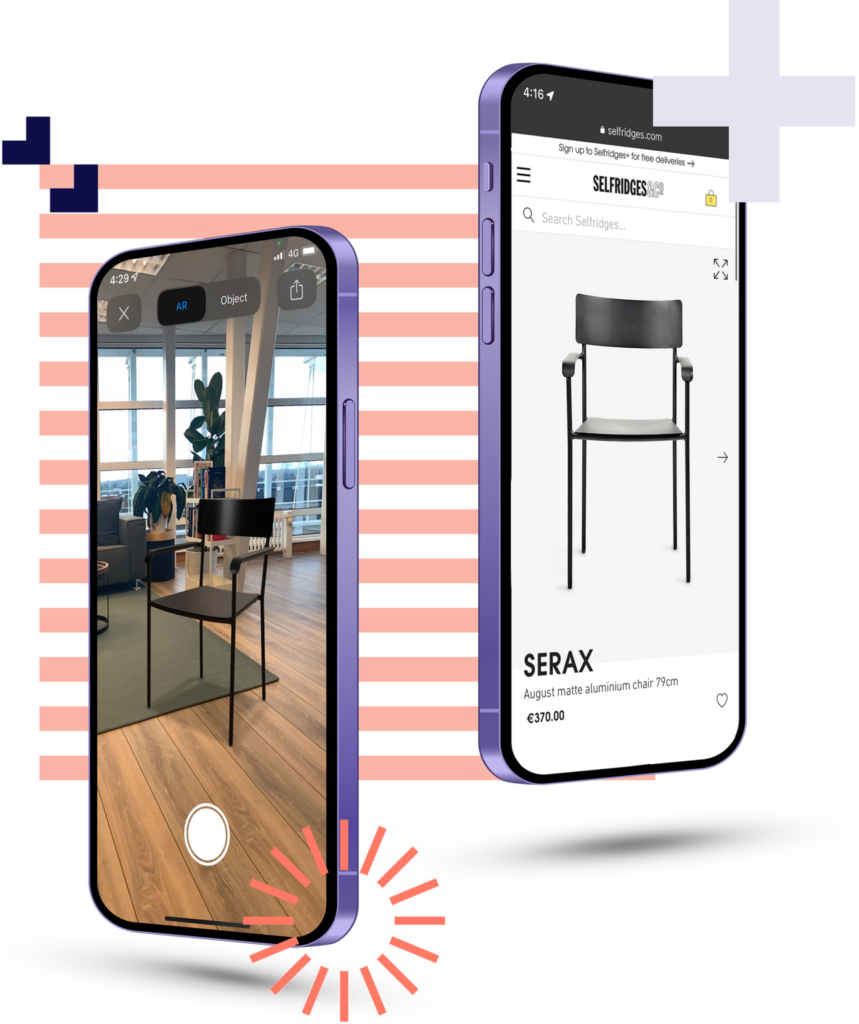Depending on your use case, and the end product you are designing for, generally all 3D is generated with the same techniques and software. There are some differences when it comes to producing 3D assets for the use of Augmented Reality, below we’ll look at some of the major points.
The software
There is a vast selection of 3D software that can be selected for your projects or workflow that is all very similar to each other, with different software mostly targeting different industries with specific tools tailored for them. For example, Cinema 4D is a very powerful modelling and rendering tool, but it is probably most widely used for motion graphics. 3ds Max and Maya are almost copies of each other and are mostly different in UI, but 3ds Max is more widely used for rendering such as architectural visualisation, and Maya is used more in animation.
In recent years there has also been a big shift in texture specific software, with the industry standard the recently acquired Adobe Substance suite of tools. Gone are the days of manually creating textures sets in Photoshop, now you can paint textures directly on 3D models with a layering system very similar to Photoshop.
At Rendered we use 3ds Max and Substance Painter as our main production tools. We have invested heavily into the automation and scripting of these tools to allow us to achieve a more consistent and scalable operation. 3ds Max allows us to generate optimised yet detailed digitised 3D models with the build-in tools. We then export these 3D models to Substance Painter to apply and generate the materials needed.
The hardware
3D production requires a lot of horsepower, the workstation computers are high spec systems with top of the range CPU’s, high capacity RAM and workstation specced graphics cards. Although the majority of the rendering happens on dedicated render farms, the workstation computers are used to create and design the actual 3D assets. Any slow downs here can not only be very frustrating to the 3D artists, but also waste a lot of production time.
Rendered has its own production teams and we don’t use any freelancers. We make sure that all of our 3D artists have an adequately specced system for their needs, this avoids any bottlenecks in production.
The workflow
Although the techniques and processes to create 3D assets are quite complicated and require specialist 3D artists, the workflow for these processes should be as simple as possible. Generally in 3D, the first stage of production is the modelling. Here we create the actual product in 3D, making sure that the topology of the product is clean, and ready for the next stage, texturing.
The texturing process has become significantly simpler with dedicated software, here the material gets applied to the product and tweaks are made to make it look as realistic and accurate as possible according to the real life product. When producing assets for Augmented Reality, this would be your last stage, and the 3D model with textures can now be exported for Augmented Reality experiences.
When you are creating realistic product renders of these 3D assets, then the last stage of the workflow would be the rendering. Here just like in a real studio, the camera and lighting are set up in a 3D scene, and the product renders are rendered out at the various different angles needed.
At Rendered we have tweaked and optimised the software, hardware and workflow over time, and we think we have now found the perfect balance to be able to supply high quality 3D assets at scale. This workflow allows us to output perfectly digitised 3D assets of your products, ready for AR, VR and CGI.
If you are interested to see how Rendered can help you create 3D assets for Augmented Reality experiences, please contact us.





